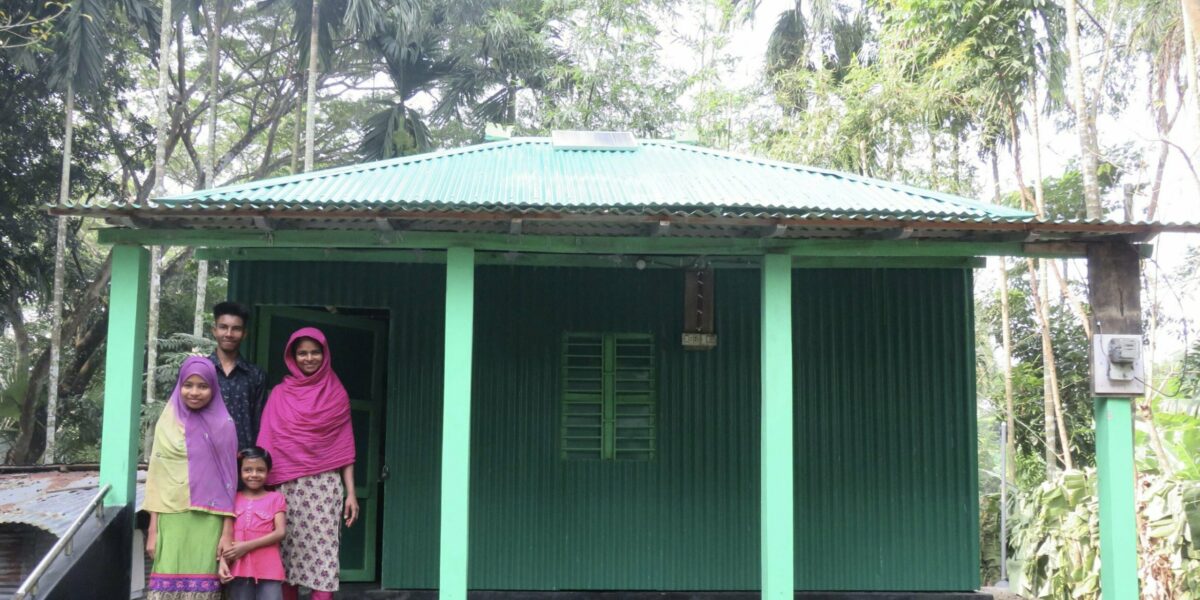

Disaster Prone Housing
Flood Resilient Housing in Bangladesh is helping people to withstand cyclones and storms in a safe environment.
Like many women in Bangladesh, Khadiza is the head of her household. Her husband, Ahsan, works as a security guard in Dhaka. Khadiza takes care of her mother-in-law, Saleha, 65, and her son, Hasib,13, at their home in Titkata Village.
Ashan earned around $92 a month, and the majority of the income that he sent home was often spent on home repairs. The leaking roof and walls were constantly in need of maintenance. Frequent storms and cyclones would often strike too, resulting in the roof completely being broken down and the floor becoming flooded and muddy as water seeped through gaps in the wooden walls.
Thousands of people around the world become sick because of the stagnant water left in their homes caused by floods. And it was only a matter of time before Khadiza and her family became seriously ill. The structural issues of the home were also of great concern as pieces of debris would fall during bad weather. Often, Khadiza’s family would have to take refuge in their neighbour’s house during storms. Their house was sturdy and safe unlike their own.
“I was ashamed we had to do that,” says Khadiza, speaking about how she felt when having to take shelter in her neighbour’s home.
Khadiza also expressed how she and her mother felt vulnerable when going to the toilet, especially at night. Without a toilet or bathroom attached to or nearby the house, they would have to walk for a while to reach it.
Improving Flood Resilience
Instead of continuing to struggle with inadequate, disaster-prone housing, Khadiza took a decisive step. She partnered with Habitat for Humanity Bangladesh.
When Habitat for Humanity assessed Khadiza’s house, it was clear that it was not at all suitable to withstand the weather in the region. The decision was therefore made to construct a new home that would be disaster-resilient and safe.
To ensure that the new home would not become flooded, a raised plinth was constructed on which the new home would be built. The house was then built on top with diagonal bracing on the walls alongside the top fixings of the roof. By fitting the walls and roof at a certain angle and constructing the walls with improved wood joinings, the new home can withstand cyclonic wind loads.
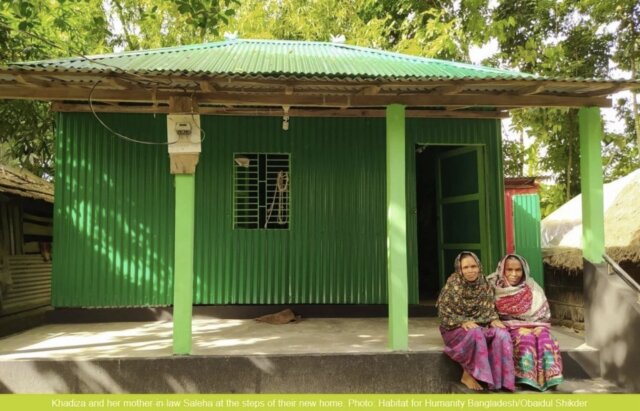
Whilst constructing the new home, Khadiza’s mother-in-law’s mobility was also taken into consideration. To ensure that she could easily access the house, handrails were also installed along the steps. The family also had a new toilet constructed closer to the house with a secure lock to ensure that they were given much needed privacy.
Khadiza and her family moved into their new home during the COVID Pandemic. The new home quickly became more than just a safe shelter from the weather. It was now protection from the spread of disease too.
“We are really thankful amid COVID-19,” Khadiza says. “We no longer have to take shelter in our neighbour’s house. We feel safe and secure, even if a disaster hits. With this home, our dignity and social status is raised.”
Lufta’s New Home
Khadiza’s family is among 74 families who have partnered with Habitat Bangladesh to improve their homes and disaster resilience. These partnerships are part of a project funded by the Korea International Cooperation Agency’s Humanitarian Assistance program.
Another woman that approached Habitat for Humanity for assistance with disaster-resilient housing as part of this project, is Lufta.
Each time a cyclone hit, Lutfa and her children had to hurry to a cyclone shelter or a relative’s home. Whilst they were able to return home after a few days, Lutfa felt more stressed. “We didn’t have enough money to repair our house as my husband earned so little,” she explains. Her husband, Sha Alam Hawlader, works as a laborer in the capital city Dhaka, earning around $70 a month.
As their old house was cramped, stuffy and dimly lit, Lutfa’s 3 children struggled to find space to do their homework and study. The constant need to evacuate only made things worse. “My children were not interested in studying,” she said. But her children became more motivated after she built a disaster-resilient home with Habitat for Humanity Bangladesh. Much like Khadiza’s new home, Lufta’s new home gives the family a private toilet, space to live comfortably, and disaster-resilient roofing and walls.
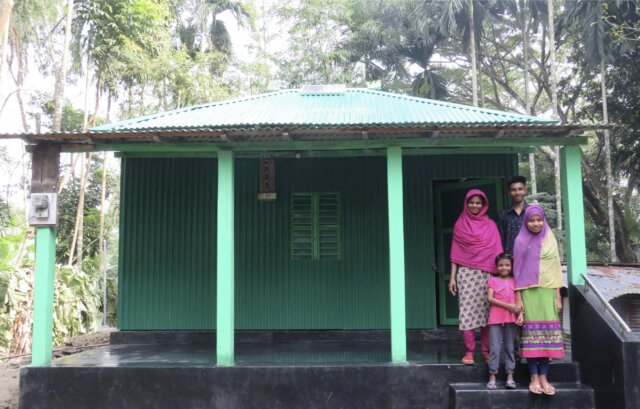
“My children set up their study desk inside the house. They can study on the veranda in the day. At night, they can do their schoolwork inside a well-ventilated room. The house is well ventilated, and my children like it,” said Lutfa. She added, “I want my children to be well-educated and have good jobs in future.”

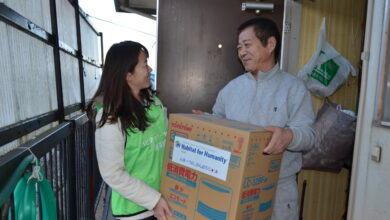

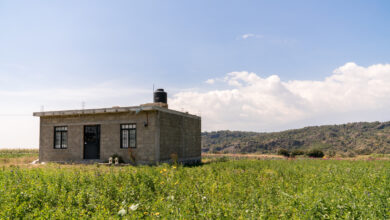
Comments